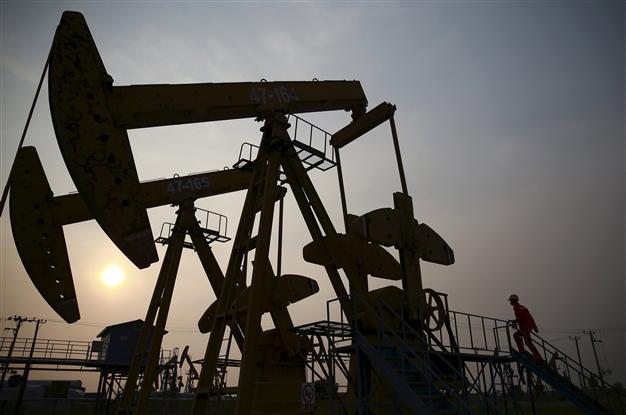Oil market slides on Goldman forecast
LONDON-Agence France-Presse

Reuters Photo
Oil prices sank on Sept. 11 after U.S. bank Goldman Sachs slashed its forecasts for crude futures, while the International Energy Agency warned of a major cut to non-OPEC output.
Brent North Sea crude for delivery in October shed $1.05 to stand at $47.98 a barrel around midday in London.
U.S. benchmark West Texas Intermediate for October lost $1.07 to $44.85 a barrel compared with the close on Sept. 10.
Crude futures had rallied on Sept. 10 as investors focused on a decline in US crude production instead of a bigger-than-expected jump in inventories.
“The oil market is drifting lower,” said analysts at energy consultancy PVM in a note emailed to clients.
“The main reason for this change of heart is Goldman Sachs’ latest oil price forecast.”
Goldman cut its 2016 price forecast for WTI to $45 a barrel, sharply down from prior guidance of $57 published in May.
“Oil prices have declined sharply over the past month to our $45-per-barrel forecast,” Goldman said in a research document.
“In fact, the oil market is even more oversupplied than we had expected and we now forecast this surplus to persist in 2016 on further OPEC production growth, resilient non-OPEC supply and slowing demand growth, with risks skewed to even weaker demand given China’s slowdown.”
Goldman warned that the oil price could tumble as low as $20 to help clear a global supply glut, but without giving a timeline.
Crude oil, the world economy’s most important raw material, has roughly halved in price in a year, plagued by oversupply and mounting worries over demand from top energy consumer China.
Traders also digested on Sept. 11 the latest monthly report from the International Energy Agency (IEA) watchdog.
Cheap oil prices ushered in by Saudi Arabia’s policy of protecting its market share will end up squeezing high-cost producers like U.S. shale drillers, leading next year to the biggest drop in output in nearly a quarter century, the IEA said.
Cheap fuel is also hooking consumers, with oil demand growth set to hit a five-year high this year, it added.
The oil market has been driven for the past year and half by an increasingly transparent policy by OPEC oil cartel kingpin Saudi Arabia to safeguard its influence against upstart shale producers who could change global dynamics by cutting US dependence on imported oil.
The IEA forecast non-OPEC oil output may drop by half a million barrels per day next year -- the biggest decline in 24 years -- with US shale producers accounting for four-fifths of that drop.
